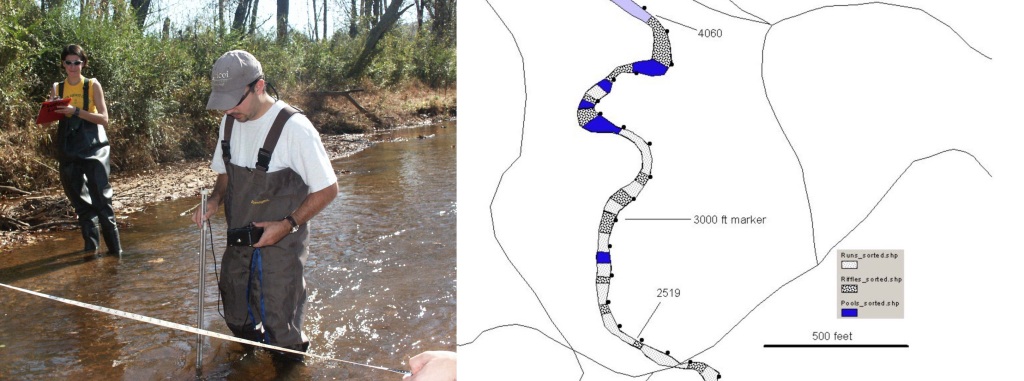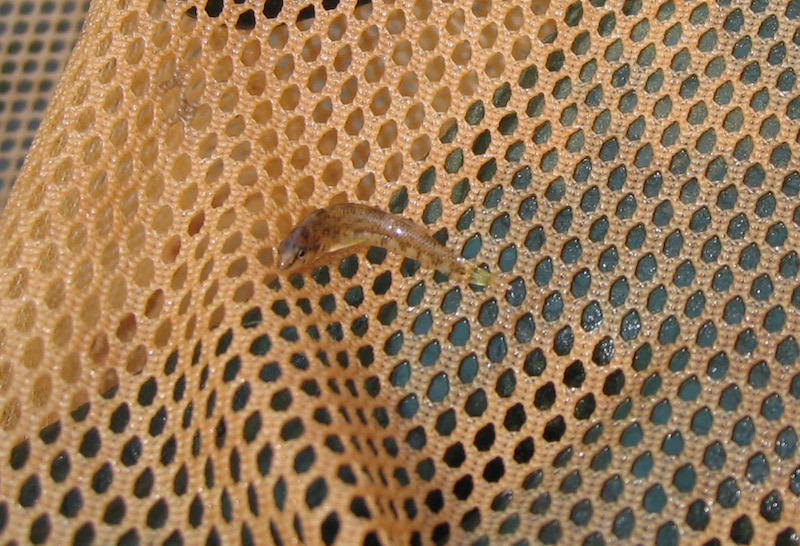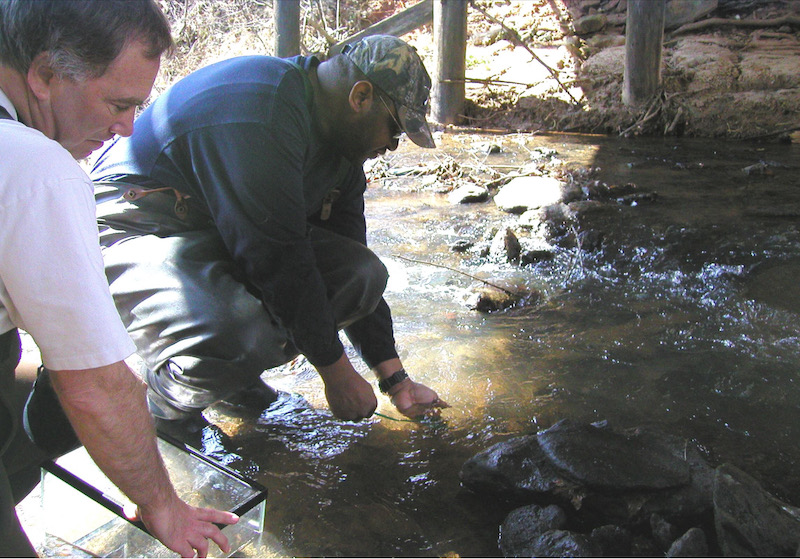PART 2 – One Stream At A Time – The Restoration of Darters To Sixmile Creek
Kevin Kubach was the second graduate student whose M.S. Thesis was part of the Turquoise Darter Restoration in Sixmile Creek. Kevin’s thesis involved surveying the physical and chemical habitat of Sixmile Creek in the Clemson Forest and computing the habitat suitability using Jay Delong’s graphs. Hundreds of transect were established at regular intervals and the stream’s characteristics (e.g., depth, water velocity, substrate) were measured at one-meter intervals across the transects. The stream was mapped dividing it into riffles (darter’s preferred habitat), runs (deeper and slower than riffles) and pools.

After determining that Sixmile Creek would provide suitable habitat for the turquoise darter the next phase of Kevin’s thesis was designing a “re-introduction” plan. The plan chosen was to capture turquoise darters from tributary of nearby Twelve Mile River during the month of February and transport them to Sixmile Creek. February was chosen as the month because the water temperatures were at the coolest point of the year and dissolved oxygen was highest. We knew the darters spawned sometime later in the spring so the female’s ovaries and the male’s testes should not be fully “seasonally-developed.” If they were fully developed there would be the risk of the fish releasing their eggs and milt prematurely due to capture and handling. The initial plan was to transfer about 100 darters each February for about 10 years. Each transfer would be made to a riffle area further upstream from the previous year’s riffle. The stream selected as the source of darters had a history of high abundance of turquoise darters. We would monitor catch per unit effort (CPUE) at the source stream (Prater’s Creek) each year. CPUE did not decline over the stocking years so we were not concerned that we were depleting the darters in Prater’s Creek. The source site was located in the middle of Prater’s Creek. We moved 637 darters between 2003 and 2010. The 2009 and 2010 stockings were lower in number. Field trips with Clemson classes after 2005 showed that the darters were well-established. Generally we captured roughly 50 darters below the Belle Shoals Road bridge (34.84 N lat, -82.75 W lon) and then a day or two later 50 from upstream of the bridge. Beginning in 2006 we released darters further upstream in Sixmile Creek at Old Seneca Highway because antidotal reports in the literature suggested young-of-the-year darters drift downstream. Finally, Kevin and I would sample Sixmile Creek downstream of the re-introduction riffles in July of the first summer when young-of-the-year (Y-O-Y) darters should be about 1 cm in length. In fact we did capture some Y-O-Y darters that first summer. We were excited because we knew the darters place in Sixmile Creek five months prior had spawned. That first Y-O-Y darter we captured was so small that at first glance we thought we had a Mayfly (insect) nymph in the net.

My fisheries classes would then sample monthly August through April each year and records of darter captures were recorded. Any darters captured were released since they would represent the “newly-established”, re-introduced darters. Annual February transfers of darters took place for six years. Kevin who was now working for SCDNR and I conducted the annual transfers. Former and current students, faculty and staff, and would assist with the annual transfers in February. Annual transfers were stopped when darter captures during Clemson class field trips on Sixmile Creek indicated that turquoise darters had achieved substantial abundance. They became very abundant on the riffles and the third student’s MS Thesis would determine what their density was per unit area of riffle, and the timing of their reproductive cycle (next week).


Leave a comment